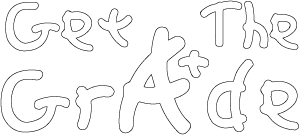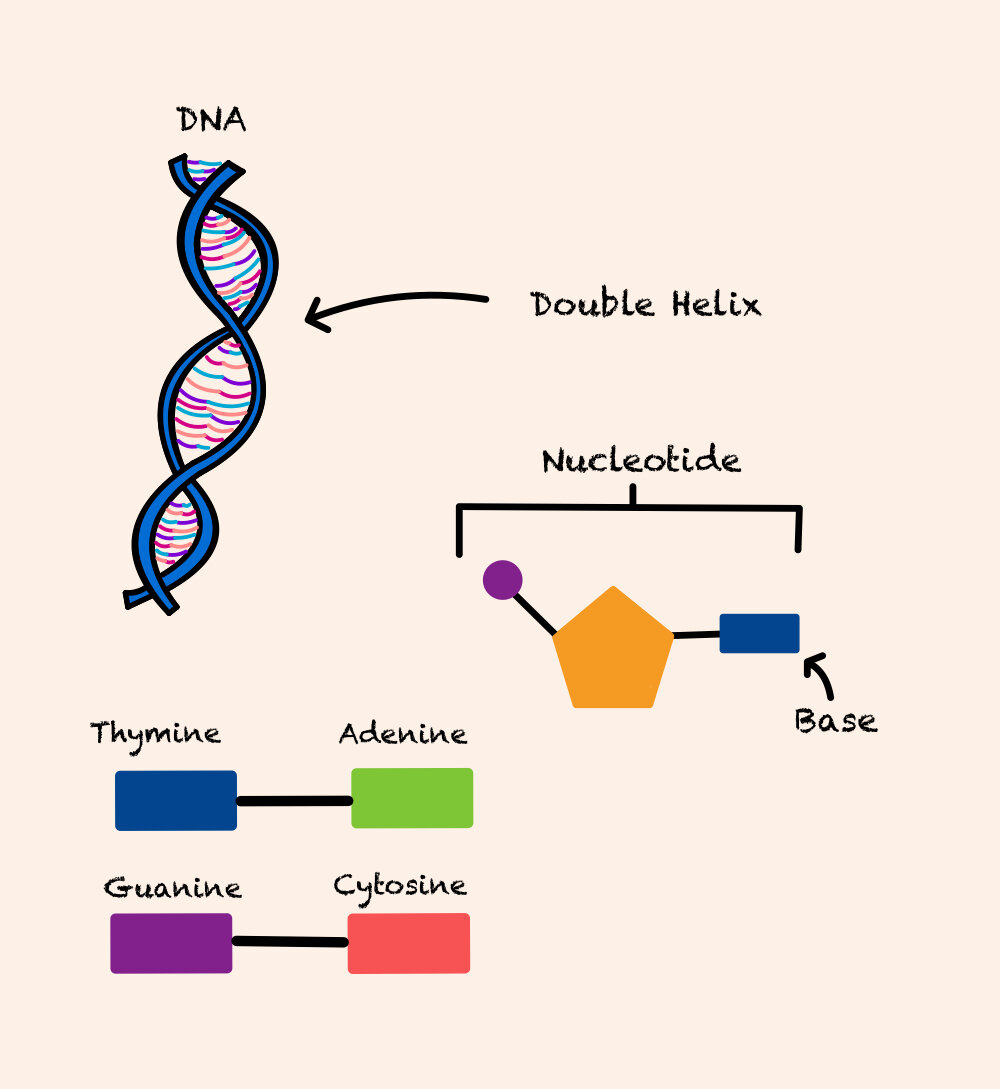Structure of DNA
WELCOME TO HIGHER BIOLOGY!
With any topic it’s best to start with the building blocks, and so, we will start this course with the Biology building blocks of the building blocks of the building blocks.
DNA Structure
DNA (deoxyribonucleic acid) is the code within the nucleus that allows cells to function and replicate. Here we will discuss the structure of DNA.
If you look at a DNA molecule, it has what is called a double helix structure, as shown in the diagram.
The individual units of DNA are called nucleotides. Each nucleotide has a section called a base, as shown in the diagram. These nucleotides are lined up in the two strands of the DNA structure, creating the antiparallel, double-helix structure.
There are four DNA bases: Thymine (T), Adenine (A), Cytosine (C) and Guanine (G). The two strands of DNA making up the double-helix are held together by base pairs. Thymine (T) is always paired with Adenine (A). Cytosine (C) is always paired with Guanine (G). Base pairs are said to be complimentary to one another.
These base pairs make up a very long and variable genetic code within DNA, with the only variation being the order of the bases.
Key Points!
-
DNA
DNA is the genetic code that controls cells.
-
DNA structure
DNA are made up of nucleotides
Nucleotides have a base, which is either adenine (A), cytosine (C), guanine (G) or thymine (T).
DNA has a double helix structure.
-
Nucleotides
-
Organisation of DNA

